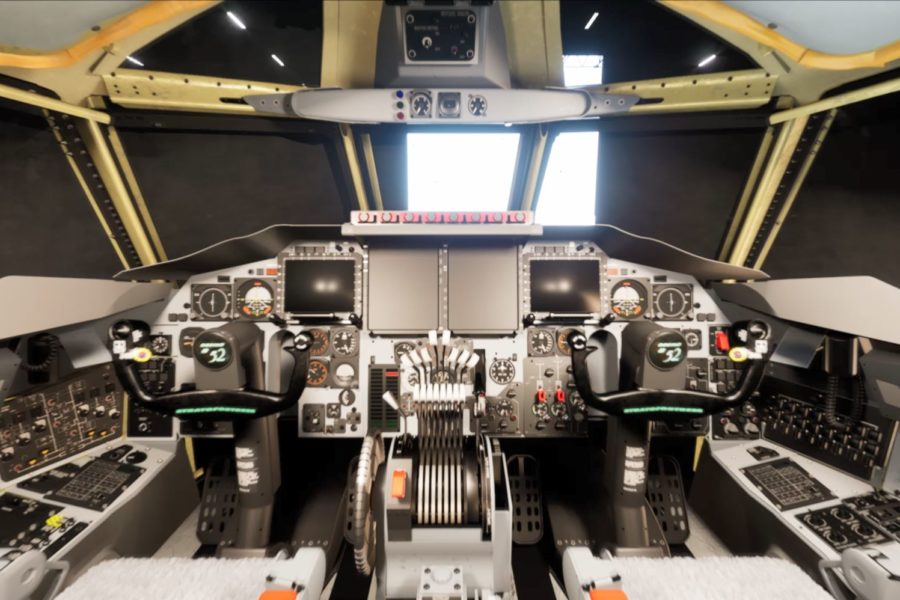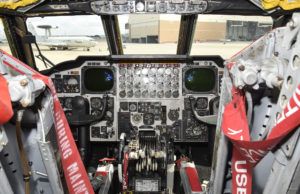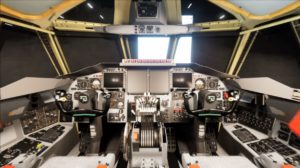A new Boeing image shows the B-52 cockpit will take on a cleaner, more streamlined appearance after the bomber completes a program of some of the most substantive changes in its 60-year history.
The image is still considered notional but will likely be close to the final version of how the BUFF’s “front office” will look, starting in the middle of this decade.
The digital image, released by Boeing to Air & Space Forces Magazine, shows a layout with many new “glass cockpit” color displays, but retaining some of the “steam gauges” and analog-style displays from the B-52H’s six decades of service.
Dominating the dashboard will be four large color multifunction displays which will present a variety of flight status information, as well as imagery from the B-52’s new radar system—derived from the F/A-18’s AN/APG-79 radar—as well as presentations of the new B-52 datalink and imagery from Sniper or Litening optical/infrared targeting pods.
The displays may also play a role in employment of the B-52’s new hypersonic weapons—the bomber will be the initial platform for the AGM-183 Air-launched Rapid Response Weapon, or ARRW—as well as its new nuclear weapon, the Long-Range Stand-Off missile, or LRSO.
The center console will also feature an updated throttle station, to control the B-52’s eight new Rolls Royce F130 engines, which will be digitally managed.
A Boeing statement accompanying the image said it shows off “new 8 x 10 digital displays, hybrid mechanical-to-digital throttle system, new data concentrators units (2x), new engine fault maintenance recorder, new engine air data system (and) modified system panels, as well as structural, electrical, pneumatic and hydraulic updates associated with this modernization effort.”
The Air Force opted to change out the B-52’s eight Pratt & Whitney TF-33 powerplants with eight new engine—rather than consolidate to four larger turbofans—for a variety of reasons, most having to do with the limited takeoff clearance of larger-diameter engines; the need for a more radical redesign of the engine/wing/pylon interface and a desire for simplicity in the conversion, and to avoid risk that could delay or derail the program. Continuing with eight engines is also expected to make for an easier transition of B-52 pilots to the upgraded aircraft.
Air Force officials have said they are contemplating re-naming the B-52H the B-52I or B-52J after it receives new radars and engines, because the aircraft will be substantially different enough after the upgrades to warrant a new designator and to keep clearer records of maintenance and pilot hours.
Boeing is the integrator for the various upgrades being installed on the B-52, and will perform much of the internal reconfiguration of control systems and wiring on the initial B-52s at its San Antonio, Texas facilities. Later work will be done at the B-52 depot at the Oklahoma Air Logistics Complex in Oklahoma City.


